Zimoun




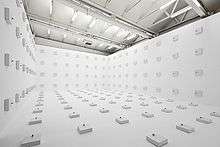

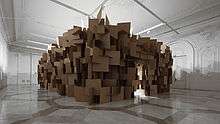
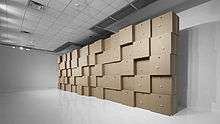
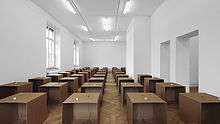
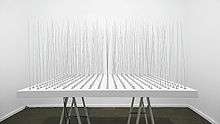
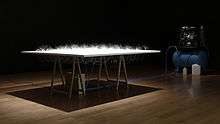
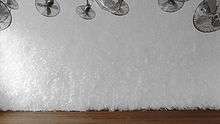

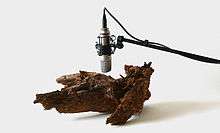
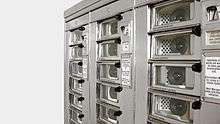
Zimoun (born 1977) is a Swiss artist who lives and works in Bern, Switzerland. A self-taught artist, he is most known for his sound sculptures, sound architectures and installation art that combine raw, industrial materials such as cardboard boxes, plastic bags, or old furniture, with mechanical elements such as dc-motors, wires, microphones, speakers and ventilators.
Life & work
Although he was never formally trained in the arts, Zimoun has received numerous prizes for his work and has exhibited internationally. “Since a little kid I have been interested in exploring sound, playing instruments and creating compositions in addition to visual arts such as paintings, cartoons, photographs and so on,” Zimoun explains in an interview, “from a very early age I was fascinated and somehow obsessed by being active in all these fields; sound, music and visually realized projects. Now, through my sound sculptures and installations many of these interests are coming together.” [1] Zimoun also mentioned composer and artist John Cage whose work and thoughts he often studied during his younger days.
Through the use of industrial objects and found materials, Zimoun’s work reconsiders the place technology holds in daily life, conjuring nostalgia for obsolete devices. His sculptures reference the chaos of the modern day, while retaining the order of minimalism. His oeuvre includes his celebrated architectural interventions and sound sculptures, as well as a variety of audio works that expand on the traditions of lowercase music, sound art, and minimal techno.[2]
Architectural Interventions and Sound Sculptures
Zimoun's sound sculptures and architectural interventions combine visual, sonic, and spatial elements. He's using simple mechanical systems to transform and activate the space. "By arranging industrially produced parts according to seemingly simple rules, he creates closed systems that develop their own behavior and rules similarly to artificial creatures", as Node10 describes his work in the exhibition abstrakt Abstrakt (2010). "Once running, they are left to themselves and go through an indeterminable process of (de)generation. These quasi autonomous creatures exist in an absolutely synthetic sphere of lifeless matter. However, within the precise, determinist systems creative categories suddenly reappear, such as deviation, refusal and transcience out of which complex patterns of behavior evolve."[3] Or, as bitforms gallery explains, "Zimoun builds architecturally-minded platforms of sound to explore mechanical rhythm and flow in prepared systems. In an obsessive display of simple and functional materials, these works articulate a tension between the orderly patterns of Modernism and the chaotic forces of life".[3]
Regarding often used elements of chance in his work, Zimoun explains in an interview (2011): "I’m interested in a mix of living structures on the one hand, and control about decisions and details on the other. A combination of structures continuously generating or evolving by chance, chain reactions or other generative systems, and a specifically delimited and contained space in which these events are allowed to happen. The compositional intentions are manifesting themselves through my deliberate containment and cautious monitoring. So I’m not using chance to discover unexpected results, but to elevate the works to a higher level of vitality."[1]
Featured in the group show, Nostalgia Machines (2011) at David Winton Bell Gallery, 150 prepared dc-motors, filler wire 1.0 mm. (2011), consists of small motors hanging at the ends of wires attached to the wall, causing the motors to bang against the wall and, according to Cate McQuaid of the Boston Globe, make the sound of a “drenching rainstorm - a trigger for associations of threat and cozy shelter.” [4]
His work also brings to mind the constant hum of machines and electronics in modern life. By “re-contextualiz[ing] material as much it does sound,” Zimoun’s work shifts the viewers’ relationship with technology and reminds them of the motors and materials that move everyday life.[5] In his 2012 solo show in NYC at bitforms gallery, Volume, Zimoun built an almost floor-to-ceiling room composed of cardboard boxes. The piece, 294 prepared dc-motors, cork balls, cardboard boxes 41x41x41cm (2012), just as the title suggests, is composed of card board boxes, each with a small motor attached to it, from which hangs a wire with a cork ball on the end. The motors cause the balls to continuously bounce against the boxes. As Hannah Daly of Art Slant notes, “The effect is initially so ambient, so close to the near constant aural din we intake at every moment, you could miss it.” [5] As The Ringling Museum of Art explains, Zimoun’s sculptures create “unique sensory experiences redefining traditional notions of sculpture and sonic performance.” [6]
His work explores the nature in industrial materials, and the industrial in nature. He not only evokes, or mimics the sounds of nature through the use of archaic materials, but at times even combines elements of nature with equipment, as in 25 woodworms, wood, microphone, sound system (2009), which amplified the sound of live woodworms.[7]
Audio Work
Largely related to his sound sculptures are Zimoun’s audio works, often engineered with a similar variety of found industrial and natural materials. Zimoun explains that his compositions “create static sound architectures and spaces, to enter and explore acoustically like a building.” [2] Since 2006 most of his compositions and performances are based on ambisonics techniques using multi channel technology.
In 2003 Zimoun and Marc Beekhuis, a Swiss graphic designer, formed the record label, Leerraum [ ], which provides a “platform for creative exchange among artists, designers, architects.” [8] Zimoun has also performed at contemporary music and art venues such as the List Art Center, Providence (2012), Mois Multi, Quebec (2011), Transmediale, Berlin (2009), Elektra, Montreal (2008), Sonic Acts, Amsterdam (2008), and ISEA Singapore (2008), among others. MoTA in Ljubljana has a work of Zimoun in their permanent collection.
Exhibitions
Zimoun’s work was a success in his hometown of Bern, where Don Li (composer/musician), a Swiss composer and musician, first showed it in his art space TONUS-MUSIC Labor. In recent years, as his notoriety has increased, Zimoun has gained international recognition, especially in Europe and the United States. Most notably he’s had solo shows at Galerie Denise René, Paris, France (2012), bitforms gallery, NY (2012), Museu da Imagem e do Som, São Paulo, Brasil (2012), The John and Mable Ringling Museum of Art, FL (2011), Contemporary Art Museum MNAC, Bucharest, Romania (2011), and the Art Museum Liechtenstein, Liechtenstein (2010). He’s also been included in group shows at the Nam June Paik Art Center, Seoul, Republic Korea (2012), Kuandu Museum of Fine Arts, Taipei, Taiwan (2012), Vasarely' Fondation, Aix en Provence, France (2010), Ars Electronica, Linz, Austria (2010), and Kunsthalle Bern, Switzerland (2008), among others.[9]
His solo show at the Ringling Museum of Art (2011) was his first solo museum exhibition in the United States. Curated by Matthew McLendon, Zimoun: Sculpting Sound included five large installations spanning five of the museum’s rooms.[10]
Exhibitions (selection):
- Backlit Gallery, Nottingham, United Kingdom, 2013.
- Nowy Teatr, Warszaw, Poland, 2013.
- Tower's Art Gallery, Brussels, Belgium, 2013.
- Auditorium Arte, Rome, Italy, 2013.
- Musée des Beaux-Arts, Rennes, France, 2013.
- Joel and Lila Harnett Museum of Art, Richmond, USA, 2013.
- Galerie Denise René, Paris, France, 2012.
- Nam June Paik Art Center, Soeul, Republic Korea, 2012.
- Museu da Imagem e do Som, São Paulo, Brasil, 2012.
- Kuandu Museum of Fine Arts, Taipei, Taiwan, 2012.
- ART Basel, Switzerland, 2011 + 2012.
- bitforms gallery, New York, USA, 2009 + 2012.
- CAN, Centre d'Art Neuchatel, Neuchatel, Switzerland, 2012.
- Seoul Museum of Art, Seoul, Republic Korea, 2012.
- Le Centrequatre, Paris, France, 2012-2013
- BIAN Biennale, Oboro, Montreal, Canada, 2012.
- Deaf Biennale, Rotterdam, The Netherlands, 2012.
- Meta.Morf Biennale, Trondheim, Norway, 2012.
- The John and Mable Ringling Museum of Art, Sarasota FL, USA, 2011.
- Contemporary Art Museum MNAC, Bucharest, Romania, 2011.
- List Art Center, David Winton Bell Gallery, Providence, USA, 2011.
- Kunsthalle Palazzo, Liestal, Switzerland, 2011.
- Gray Area Foundation for the Arts, Swissnex, San Francisco, USA, 2011.
- Lydgalleriet, Bergen, Norway, 2011.
- Kunsthalle Luzern, Switzerland, 2011.
- Kunstmuseum Liechtenstein, Schichtwechsel, Liechtenstein, 2010.
- Vooruit Arts Center, Gent, Belgium, 2010.
- La Rada, Locarno, Switzerland, 2010.
- Kunstraum Kreuzlingen, Switzerland, 2010.
- Kunstmuseum, Bern, Switzerland, 2005 + 2009.
- Centre pour l'image contemporaine, Geneva, Switzerland, 2008.
- Kunsthalle, Bern, Switzerland, 2004, 2006 + 2008.
- DDM Gallery, Shanghai, China, 2004.
- Tonus Labor, Bern, 2002, 2003 + 2004.
- Photoforum Centre Pasquart, Biel/Bienne, Switzerland, 2002, 2003 + 2004.
Awards
- 2010 Prix Ars Electronica, Digital Music & Sound Art, Honorary Mention
- 2009 Aeschlimann Corti Award, First Prize
- 2008 Sitemapping/Mediaprojects award, Budesamit für Kultur (BAK)
- 2007 New York Residency, Bern Canton, Cultural Department
- 2006 Kiefer Hablitzel Preis, Swiss Art Awards
- 2005 Aeschlimann Corti Award, Förderpreis
- 2004 Residency in Beijing, China
- 2000 Mention Swiss Youth Photo Award
Discography
- Richard Garet + Zimoun «21.21» [leerraum.ch] (5.1 multi channel composition, 2015).
- Zimoun «feat. Helena Gough» [leerraum.ch] (5.1 multi channel DVD, 2010).
- Mahmoud Refat, Pe Lang + Zimoun «Statics III» [leerraum.ch] (4.1 multi channel DVD, 2008).
- Asher + Zimoun «Untitled Movement» [leerraum.ch] (5.1 multi channel DVD, 2008).
- Fourm + Zimoun «Primary Structures» [leerraum.ch] (5.1 multi channel DVD, 2008).
- Zimoun feat. Mik Keusen «Prepared I» [leerraum.ch] (cd, 2007).
- Kenneth Kirschner + Zimoun «July 29, 2004 (4.1)» (4.1 multi channel DVD, 2007).
- Leerraum [ ] «Sound Contributions I» [leerraum.ch] (5.1 multi channel DVD, 2007).
- Zimoun «Kabel 0.1/0.2» [leerraum.ch] (cd, 2006).
- Mahmoud Refat, Pe Lang + Zimoun «Statics II» [leerraum.ch] (cd, 2006).
- Mahmoud Refat + Zimoun «Statics I» [leerraum.ch] (cd, 2006).
- Fm3 + Zimoun «live 19.06.2004» [leerraum.ch] (cd, 2005).
- Zimoun «Nå» [tonus-music-records.com] (cd, 2004).
- Zimoun «Flachland» [leerraum.ch] (cd, 2003).
- Zimoun «Viskos» [leerraum.ch] (cd, 2003).
- Zimoun «Drums» [leerraum.ch] (cd, 2003).
- Zimoun «Momental» [ammoniac-music records] (cd, 2002).
Resources
- Zimoun's Vimeo Page (video archive)
- Images of Zimoun's Work
- Detailed CV of Zimoun
- Audio Works of Zimoun on Discogs
- Zimoun Artist Page, bitforms gallery
- Zimoun Video Page, bitforms gallery
- Klanten, S. Ehmann, V. Hanschke (ed.), A Touch of Code: Interactive Installations and Experiences, (Berlin: Gestalten, 2011), pp. 42–43.
- Mancuso, Marco, “Sound Organisms in Evolution,” Digimag, No. 61, February 2011, web.
- Poviña, Oscar Gomez, “Noise Structures,” Vnfold Magazine, July 12, 2010.
- Rodda, Corey Rae, “Zimoun modern art exhibition opens at Ringling Museum of Art,” New College of Florida student newspaper, October 23, 2011, web.
- Rife, Susan, “Sculpting Sound,” Herald Tribune, October 14, 2011, web.
References
- 1 2 Wright, Mark Peter (January 1, 2011). "Interview". Ear Room.
- 1 2 "Zimoun Works". Retrieved 23 August 2012.
- 1 2 "Zimoun About". Retrieved 3 September 2012.
- ↑ McQuaid, Cate (Feb 7, 2012). "Mechanics Laid Bare For Thought". The Boston Globe.
- 1 2 Daly, Hannah (Feb 6, 2012). "Spectacular Kinetics". ArtSlant. Retrieved 23 August 2012.
- ↑ McLendon, Matthew. "Zimoun: Sculpting Sound". The John and Mable Ringling Museum of Art. Retrieved 23 August 2012.
- ↑ "Zimoun Works". Retrieved 23 August 2012.
- ↑ "Leerraum [ ]".
- 1 2 "Zimoun Biography". bitforms gallery nyc. Retrieved 23 August 2012.
- ↑ McLendon, Matthew. "Zimoun: Sculpting Sound". The John and Mable Tingling Museum of Art. Retrieved 24 August 2012.